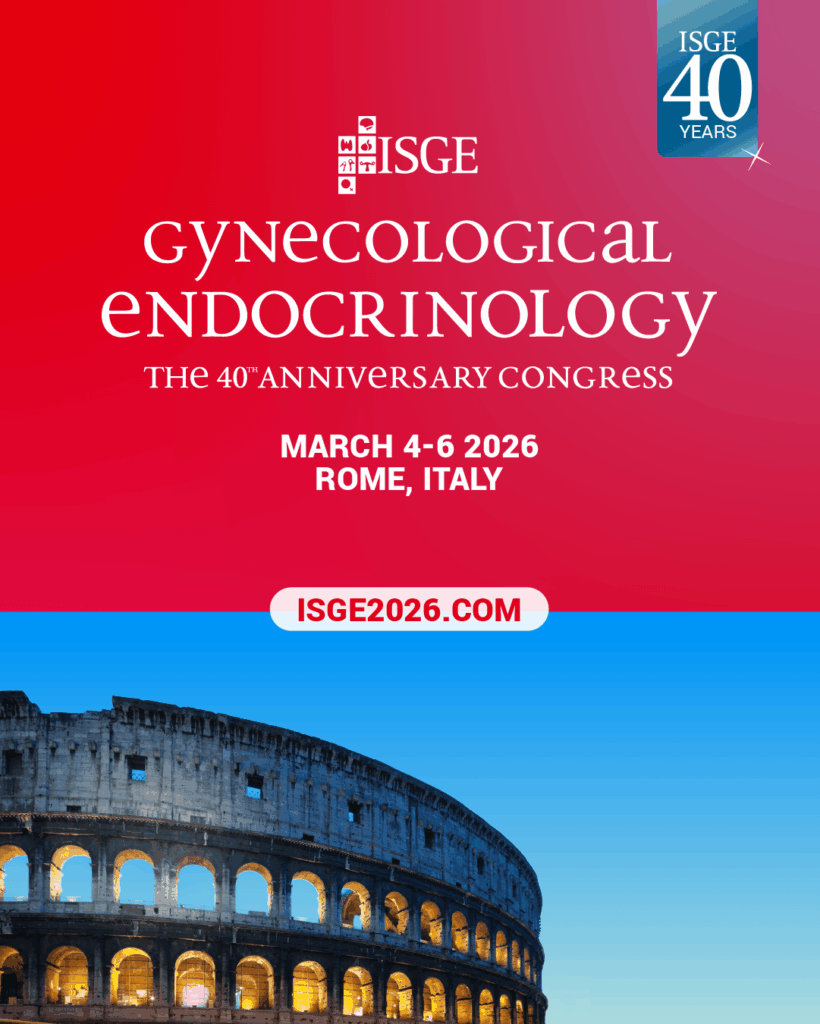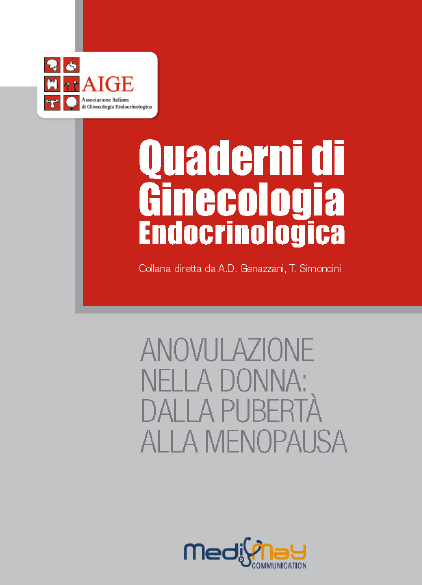-
Fatma Ferda Verit
The prevalence of metabolic syndrome in clomiphene citrate resistant polycystic ovary syndrome
Gynecological Endocrinology, 2012; 28(5): 365–369Abstract
Objective: To investigate the prevalence of metabolic syndrome in clomiphene citrate (CC) resistant polycystic ovary syndrome (PCOS) patients.
Methods: 58 CC resistant PCOS patients, 52 CC responders, 53 fertile PCOS and 53 age and body mass indexmatched normoandrogenic ovulatory fertile women were evaluated for metabolic syndrome.
Results: Metabolic syndrome prevalence was 41.4% in CC resistants, in 23.1% of CC responders, in 11.3% of PCOS fertiles and 0% of controls (p < 0.0001). Waist circumference (WC) > 88 cm was 44.8%, systolic blood pressure (BP) ≥130 mmHg and diastolic BP ≥85 mmHg were 27.6%, TG (triglyceride) ≥150 mg/dL was 36.2%, HDL(high density lipoprotein)
<50 mg/dL was 63.8%, fasting glucose levels ≥100 mg/dL was 20.7% in CC resistant PCOS women. There were positive associations between CC resistance and WC > 88 cm, BP ≥ 130
≥ 85 mmHg, TG ≥ 150 mg/dL, HDL < 50 mg/dL, fasting glucose ≥100 mg/dL, and presence of metabolic syndrome (p < 0.05, for all). Moreover, WC > 88 cm, and HDL < 50 mg/dL were independent variables that were associated by CC resistance by multivariate regression analysis.
Conclusions: CC resistant PCOS patients have high prevalence of metabolic syndrome. These women have an increased risk of future cardiovascular disease. -
Tevfik Yoldemir, Mithat Erenus
The impact of metabolic syndrome on bone mineral density in postmenopausal women
Gynecological Endocrinology, 2012; 28(5): 391–395Abstract
Aim: To determine the impact of metabolic syndrome (MS) on dual-energy X-ray absorptiometry (DEXA) derived mean T scores of lumbar vertebra of Turkish women during postmenopausal period.
Methods: One hundred and eighty healthy postmenopausal women seen at the University Gynecology or Menopause Outpatient Clinics were enrolled for this cross sectional study.
The women were allocated to one of two groups according to the presence or absence of MS. The groups were then compared for bone mineral density (BMD) of the lumbar vertebrae, as
measured by DEXA. The Fischer exact test were used for continuous variables and chi-square test was used for categorical variables. Multivariable logistic regression modeling was used to
compute the odds ratios of variables predictive of diminished Tscores at lumbar area less than −1.
Results: The mean T scores for the lumbar area for women with or without MS were comparable either according to National Cholesterol Education Program criteria. Moderate positive correlation was found between Tscore less than −1 and high density lipoprotein (HDL) cholesterol. Triglyceride/HDL cholesterol and fasting blood glucose showed weak negative correlation with T score less than −1.
Conclusions: It appears that MS in postmenopausal women does not have an impact on BMD in our population. -
Franca Fruzzetti, Florence Trémollieres, Johannes Bitzer
An overview of the development of combined oral contraceptives containing estradiol: focus on estradiol valerate/dienogest
Gynecological Endocrinology, 2012; 28(5): 400–408Abstract
Natural estrogens such as estradiol (E2) or its valerate ester (E2V) offer an alternative to ethinyl estradiol (EE). E2-containing combined oral contraceptives (COCs) have demonstrated sufficient ovulation inhibition and acceptable contraceptive efficacy. However, earlier formulations were generally associated with unacceptable bleeding profiles. Two E2V-containing preparations have been approved to date for contraceptive use: E2V/cyproterone acetate (CPA) (Femilar®; only approved in Finland and only in women >40 years or women aged 35–40 years in whom a COC containing EE is not appropriate) and E2V/dienogest (DNG; Qlaira®/Natazia®). The objective of the current review is to provide an overview of the development of COCs containing natural estrogen, highlighting past issues and challenges faced by earlier formulations, as well as the current status and future directions. The majority of information to date pertains to the development of E2V/DNG.
Free PDF -
Elisabeth Lerchbaum, Barbara Obermayer-Pietsch
Vitamin D and fertility: a systematic review
European Journal of Endocrinology 2012, 166: 765–778Abstract
Background: Vitamin D has been well-known for its function in maintaining calcium and phosphorus homeostasis and promoting bone mineralization. There is some evidence that in addition to sex steroid hormones, the classic regulators of human reproduction, vitamin D also modulates reproductive processes in women and men.
Aim: The aim of this review was to assess the studies that evaluated the relationship between vitamin D and fertility in women and men as well as in animals.
Methods: We performed a systematic literature search in Pubmed for relevant English language publications published until October 2011.
Results and discussion: The vitamin D receptor (VDR) and vitamin D metabolizing enzymes are found in reproductive tissues of women and men. Vdr knockout mice have significant gonadal insufficiency, decreased sperm count and motility, and histological abnormalities of testis, ovary and uterus. Moreover, we present evidence that vitamin D is involved in female reproduction including IVF outcome (clinical pregnancy rates) and polycystic ovary syndrome (PCOS). In PCOS women, low 25-hydroxyvitamin D (25(OH)D) levels are associated with obesity, metabolic, and endocrine disturbances and vitamin D supplementation might improve menstrual frequency and metabolic disturbances in those women. Moreover, vitamin D might influence steroidogenesis of sex hormones (estradiol and progesterone) in healthy women and high 25(OH)D levels might be associated with endometriosis. In men, vitamin D is positively associated with semen quality and androgen status. Moreover, vitamin D treatment might increase testosterone levels. Testiculopathic men show low CYP21R expression, low 25(OH)D levels, and osteoporosis despite normal testosterone levels.
Free PDF -
Zeina Haoula, Maisa Salman, William Atiomo
Evaluating the association between endometrial cancer and polycystic ovary syndrome
Hum. Reprod. 2012, 27(5): 1327-1331Abstract
BACKGROUND Given the current lack of clarity in the published literature, we performed a systematic review of the literature to determine the exact strength of the association between polycystic ovary syndrome (PCOS) and endometrial cancer (EC).
METHODS All published studies on the association between PCOS and EC identified through MEDLINE (1966–April 2011), EMBASE (1980–April 2011) and Cochrane (1998–April 2011). Original data were abstracted where available and summarized on a separate Microsoft Excel (2007) database for analysis. A total of 14 studies comparative and non-comparative were identified and included.
RESULTS The non-comparative and comparative data suggested that women with PCOS were more likely to develop EC. A meta-analyses of five comparative studies showed an increased risk of EC in women with an odds ratio of 2.89 with a 95% confidence interval of 1.52–5.48.
CONCLUSIONS Women with PCOS are about three times more likely to develop EC compared with women without it. This translates into a 9% lifetime risk of EC in Caucasian women with PCOS compared with 3% in women without it. Although most women (91%) with PCOS will not develop endometrial cancer, our study has shown that they are more likely at increased risk. More studies are required to clarify the exact molecular mechanisms, determine the best way of screening and preventing disease progression. -
Jin Ju Kim, Young Min Choi, Young Min Cho, Hye Seung Jung, Soo Jin Chae, Kyu Ri Hwang, Seung Sik Hwang, Seung Yup Ku, Seok Hyun Kim, Jung Gu Kim, Shin Yong Moon
Prevalence of elevated glycated hemoglobin in women with polycystic ovary syndrome
Hum. Reprod. 2012 27(5): 1439-1444Abstract
BACKGROUND Recently, the American Diabetes Association (ADA) has included glycated hemoglobin A1c (A1C) level as a component of diagnostic criteria of ‘diabetes’ or ‘increased risk for diabetes’. This study was conducted to examine the prevalence of and risk factors for ‘elevated A1C’ (≥5.7%) in women with polycystic ovary syndrome (PCOS).
METHODS A1C was measured using an immunoturbidimetric assay, and was evaluated in 154 patients with PCOS and 469 age-matched controls (match ratio of 1–3). All subjects were categorized by BMI (non-obese <25 kg/m2 and obese ≥25 kg/m2), and the prevalence of elevated A1C was also analyzed according to BMI.
RESULTS One-third (31.2%) of the patients with PCOS had elevated A1C. The prevalence of elevated A1C (≥5.7%) was similar in obese women with PCOS and obese controls (23.5 and 20.0%, respectively, P= 1.0) but non-obese women with PCOS (mean age 29.8 ± 5.3 years) had a higher prevalence of elevated A1C than non-obese controls (31.2 versus 6.6%, respectively, P< 0.001). Logistic regression analysis of all subjects showed that the odds that a woman has elevated A1C was 6.7 times higher if she has PCOS (adjusted odds ratio 6.67, 95% confidence interval 3.50–12.70).
CONCLUSIONS The high prevalence of elevated A1C in non-obese patients with PCOS and an increased risk of elevated A1C associated with PCOS suggest that PCOS itself may be associated with abnormal A1C status. Assessing A1C level in young, non-obese patients with PCOS may be a useful new approach to screening for diabetes -
J. A. Simon
What’s new in hormone replacement therapy: focus on transdermal estradiol and micronized progesterone
CLIMACTERIC 2012;15(Suppl 1):3–10Abstract
The original conclusions of the Women ’ s Health Initiative study have been questioned as a result of the availability of age-stratifi ed data. Initial concerns regarding the risk of coronary heart disease (CHD) in association with the use of hormone replacement therapy (HRT) have been replaced with concerns regarding thromboembolic disease, encompassing venous thromboembolism (VTE), particularly in younger postmenopausal women, and stroke, particularly in older women. The original publication of the study results led to a dramatic decrease in the use of oral HRT; however, the use of transdermal HRT has increased over recent years. Guidelines from the North American Menopause Society, the Endocrine Society, the International Menopause Society, and specifi c guidelines from the European Menopause and Andropause Society for the management of menopausal women with a personal or family history of VTE all contain positive statements regarding both transdermal estradiol and micronized progesterone. Unlike oral estrogens, transdermal estradiol has been shown not to increase the risk of VTE, or stroke (doses < 50 m g), and to confer a signifi cantly lower risk for gallbladder disease. Unlike some progestogens, progesterone is also not associated with an increased risk of VTE, or with an increased risk of breast cancer. Based on these data, which are now included in the guidelines, the use of transdermal estradiol and micronized progesterone could reduce or possibly even negate the excess risk of VTE, stroke, cholecystitis, and possibly even breast cancer associated with oral HRT use.
Free PDF -
A.O. Mueck
Postmenopausal hormone replacement therapy and cardiovascular disease: the value of transdermal estradiol and micronized progesterone
CLIMACTERIC 2012;15(Suppl 1):11–17Abstract
Most available postmenopausal hormone replacement therapies (HRT) offer similar effi cacy, but differ with respect to the cardiovascular risks associated with their use. There is a wealth of evidence to suggest that, unlike oral estrogens, transdermal estradiol does not increase the risk of venous thromboembolism, probably due to its lack of effect on the coagulation cascade, including thrombin generation and resistance to activated protein C, and does not increase the risk of stroke. It is cardioprotective, signifi cantly reducing the incidence of myocardial infarction compared with non-users; it signifi cantly reduces the incidence of new-onset diabetes, a risk factor for myocardial infarction. Micronized progesterone has also been shown not to increase the risk of venous thromboembolism and further reduced the incidence of new-onset diabetes when combined with transdermal estrogen. Micronized progesterone has a neutral effect on the vasculature, including a neutral or benefi cial effect on blood pressure. Therefore, experimental and clinical data indicate that transdermal estradiol and micronized progesterone could represent the optimal HRT, particularly in women at risk of adverse events.
Free PDF -
A Gompel
Micronized progesterone and its impact on the endometrium and breast vs. progestogens
CLIMACTERIC 2012;15(Suppl 1):18–25Abstract
It is well established that progestogens protect the endometrium against the proliferative effects of estrogens in postmenopausal women receiving hormone replacement therapy (HRT). Therefore, micronized progesterone and progestogens are recommended as part of combined HRT in women with an intact uterus. The protective effect of progestogens against hyperplasia and endometrial cancer does not appear to differ with different progestogens (micronized progesterone or progestogens), but appears to be affected by the regimen and thus the dose, with continuous combined treatment conferring better protection. However, the protective effect of progestogens seen in the endometrium is not replicated in the breast. Progestogens combined with estrogens are generally associated with a small increase in the risk of invasive breast cancer, which is believed to be due to a promoter effect. However, all progestogens are not equivalent in their effects on the breast and breast cancer risk. Micronized progesterone does not increase cell proliferation in breast tissue in postmenopausal women compared with synthetic medroxyprogesterone acetate (MPA). Experimental evidence suggests that the opposing effects of MPA and micronized progesterone on breast tissue are related to the non-specifi c effects of MPA, including glucocorticoid activity and differences in the regulation of gene expression. Therefore, for women with an intact uterus, micronized progesterone may be the optimal choice as part of combined HRT.
-
V. Seifert-Klauss , M. Schmidmayr , E. Hobmaier, T. Wimmer
Progesterone and bone: a closer link than previously realized
CLIMACTERIC 2012;15(Suppl 1):26–31Abstract
Decreasing rates of ovulation, hormonal changes, and increasing bone loss pre-date menopause by several years. Data suggest that, in addition to estradiol, progesterone may play a signifi cant role in the interrelationship between the ovaries and the skeleton in women. Indeed, the differentiation of human osteoblasts from perimenopausal women has been shown to be dose-dependent on progesterone at physiological concentrations. Data from a pilot study in perimenopasual women also suggested that higher progesterone levels, as seen in the luteal phase of ovulatory cycles, may be associated with more bone formation and with slightly less bone resorption than anovulatory cycles in which progesterone levels are low (< 5.8 ng/ml). These data led to the initiation of a large, prospective, 2-year observational study in perimenopausal women (the PEKNO study). Interim data from the PEKNO study indicate that a decrease in ovulation correlated with an increase in the loss of bone mineral density (BMD). A meta-analysis estimated a BMD increase of 0.5% per year in women with normal ovulation, and a BMD decrease of 0.7% per year in young women with ovulatory disturbances (anovulation or short luteal phase). A meta-analysis in postmenopausal women demonstrated a 1.3% increase per year in BMD when receiving hormone replacement therapy with unopposed estrogens, and a further 0.4% increase in BMD in women receiving estrogens plus progestogens. The role of progesterone in bone metabolism in perimenopausal women who are estrogen-replete requires further study.
-
P. Villaseca
Non-estrogen conventional and phytochemical treatments for vasomotor symptoms: what needs to be known for practice
CLIMACTERIC 2012;15:115–124Abstract
Objective Non-hormonal treatment for menopausal vasomotor symptoms (VMS) is needed in women in
whom there are medical or personal concerns on the use of hormone therapy. This paper reviews conventional and phytochemical therapies available for the relief of VMS, on their mechanisms of action, their effi cacy and safety concerns.
Methods Medline was searched through Pubmed on the names of the diverse therapies analyzed, up to June 2011. The Cochrane Controlled Clinical Trials Register Database was searched for relevant trials that provided data on treatment of menopausal hot fl ushes.
Results All non-estrogen treatments for VMS are less effi cacious than estrogen treatment. Randomized trials with neuroendocrine agents show globally modest to moderate reduction of VMS and frequent bothersome adverse events. The variability of effects makes it possible to undergo treatment in search for individual response where estrogen treatment is contraindicated. The antidepressants that interact with cytochrome P450, inhibiting tamoxifen metabolism to endoxifen, interfere with tamoxofen therapy in breast cancer patients. Otherwise, botanical products containing isofl avones from soy bean or red clover have great variability in bioavailability, have a broader spectrum of action than estradiol, and have predominant estrogen receptor-b activity. The effi cacy of phytoestrogens on VMS is similar to placebo. They should be avoided in women with breast cancer and, in particular, in women being treated with tamoxifen or aromatase inhibitors due to possible antagonism. Cimicifuga racemosa is not a phytoestrogen, has partial serotonin agonist action and has a modest effect on VMS.
Conclusions There are safe non-hormonal conventional treatments for menopausal VMS, although they are less effi cacious than estrogens. The indication of phytochemicals is for women who make this choice on personal beliefs; long-term studies of larger groups of patients are needed to assess safety.
Letteratura scientifica selezionata
-
Fatma Ferda Verit
The prevalence of metabolic syndrome in clomiphene citrate resistant polycystic ovary syndrome
Gynecological Endocrinology, 2012; 28(5): 365–369 -
Tevfik Yoldemir, Mithat Erenus
The impact of metabolic syndrome on bone mineral density in postmenopausal women
Gynecological Endocrinology, 2012; 28(5): 391–395 -
Franca Fruzzetti, Florence Trémollieres, Johannes Bitzer
An overview of the development of combined oral contraceptives containing estradiol: focus on estradiol valerate/dienogest
Gynecological Endocrinology, 2012; 28(5): 400–408 -
Elisabeth Lerchbaum, Barbara Obermayer-Pietsch
Vitamin D and fertility: a systematic review
European Journal of Endocrinology 2012, 166: 765–778 -
Zeina Haoula, Maisa Salman, William Atiomo
Evaluating the association between endometrial cancer and polycystic ovary syndrome
Hum. Reprod. 2012, 27(5): 1327-1331 -
Jin Ju Kim, Young Min Choi, Young Min Cho, Hye Seung Jung, Soo Jin Chae, Kyu Ri Hwang, Seung Sik Hwang, Seung Yup Ku, Seok Hyun Kim, Jung Gu Kim, Shin Yong Moon
Prevalence of elevated glycated hemoglobin in women with polycystic ovary syndrome
Hum. Reprod. 2012 27(5): 1439-1444 -
J. A. Simon
What’s new in hormone replacement therapy: focus on transdermal estradiol and micronized progesterone
CLIMACTERIC 2012;15(Suppl 1):3–10 -
A.O. Mueck
Postmenopausal hormone replacement therapy and cardiovascular disease: the value of transdermal estradiol and micronized progesterone
CLIMACTERIC 2012;15(Suppl 1):11–17 -
A Gompel
Micronized progesterone and its impact on the endometrium and breast vs. progestogens
CLIMACTERIC 2012;15(Suppl 1):18–25 -
V. Seifert-Klauss , M. Schmidmayr , E. Hobmaier, T. Wimmer
Progesterone and bone: a closer link than previously realized
CLIMACTERIC 2012;15(Suppl 1):26–31 -
P. Villaseca
Non-estrogen conventional and phytochemical treatments for vasomotor symptoms: what needs to be known for practice
CLIMACTERIC 2012;15:115–124






